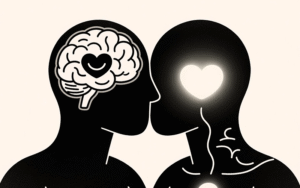Deep within the yellowed pages of 19th-century medical journals lies one of history’s most peculiar therapeutic sagas – a story where clinical pathology intertwined with sexual politics, where physicians’ aching hands birthed a mechanical revolution, and where a legitimate medical device transformed into a taboo pleasure object. This is the hidden history of how the vibrator emerged from Victorian operating theaters to become modern society’s most controversial intimacy aid.
Our tale begins with the mysterious “wandering womb” theory dating back to ancient Greece. Hippocratic physicians believed unsatisfied uteruses could migrate through women’s bodies, causing what they termed hysteria (from “hystera” meaning womb). By the Victorian era, this evolved into a catch-all diagnosis for any “unseemly” female behavior – from melancholia to erotic fantasies. Medical texts from 1859 list 75 potential symptoms including nervousness, faintness, and “a tendency to cause trouble.”

The prescribed cure proved more shocking than the disease itself. Following French neurologist Jean-Martin Charcot’s clinical demonstrations at Salpêtrière Hospital, British physicians adopted manual pelvic massage as standard treatment. Doctors would manually stimulate patients to “hysterical paroxysm” – Victorian medical code for orgasm. London’s 1873 Medical Handbook of Diseases of Women soberly instructed: “The physician must persist until the patient is relieved.”
This created an unprecedented clinical crisis. With demand exceeding supply, physicians found themselves performing 30-40 manual treatments daily. The physical toll became legendary – New England Journal of Medicine (1883) documented physicians developing hand tremors and carpal tunnel syndrome. Dr. Robert Latou Dickinson’s clinical notes reveal practitioners complaining of “massage-induced arthritis” and “chronic finger fatigue.”
The solution emerged from an unexpected quarter. In 1883, British physician Joseph Mortimer Granville patented the first electromechanical vibrator, initially called the “Manipulator.” This steam-powered behemoth stood waist-high, required coal to operate, and resembled industrial factory equipment more than medical apparatus. Yet its 700 pulses per minute revolutionized treatment efficiency. By 1902, Sears Roebuck catalog offered portable “Home Vibrators” claiming to cure everything from gout to deafness.
What followed was a golden age of therapeutic vibration. Between 1899-1917, over 120 vibration-related patents flooded US offices, including bizarre designs like the “Auto-Crescendo” helmet vibrator and water-powered “Hydro-Spasmodic Appliance.” Luxury models featured mother-of-pearl handles and gold-plated attachments. A 1918 advert in Woman’s Home Companion promised vibration therapy would “restore the bloom of youth to sallow cheeks.”

The device’s fall from medical grace occurred through cultural collision. As early cinema began depicting vibrators in risqué contexts (notably in 1917’s banned film “The Sex Maniac”), physicians grew increasingly uneasy. The final blow came when psychoanalysts like Freud reclassified hysteria as mental rather than sexual. By 1930, the American Medical Association had purged vibrators from approved devices, their sexual connotations overwhelming medical legitimacy.
This transformation reveals profound truths about medical history. Like ancient Chinese “stone needles” evolving into acupuncture or Mesopotamian beer becoming early antibiotics, the vibrator exemplifies how practical needs drive therapeutic innovation. Its journey from clinical tool to taboo object mirrors medicine’s perpetual dance between biological necessity and cultural morality.
Modern historians now recognize vibrators as among the first electrical appliances in homes – predating vacuum cleaners by a decade and toasters by two. The 1999 discovery of Dr. Clelia Mosher’s 1892 clinical vibrator, preserved at Stanford University, forced academic re-evaluation of Victorian sexual health practices. Contemporary manufacturers have come full circle, with companies like Dame Products now collaborating with sexual health specialists to destigmatize therapeutic use.
From Hippocrates’ wandering womb theory to modern pleasure-positive feminism, the vibrator’s odyssey holds up a mirror to society’s evolving attitudes toward women’s bodies and sexual agency. What began as a desperate treatment for imaginary illnesses became a revolutionary tool for reclaiming bodily autonomy – proving that sometimes, medical history’s strangest detours lead to profound cultural awakenings.




